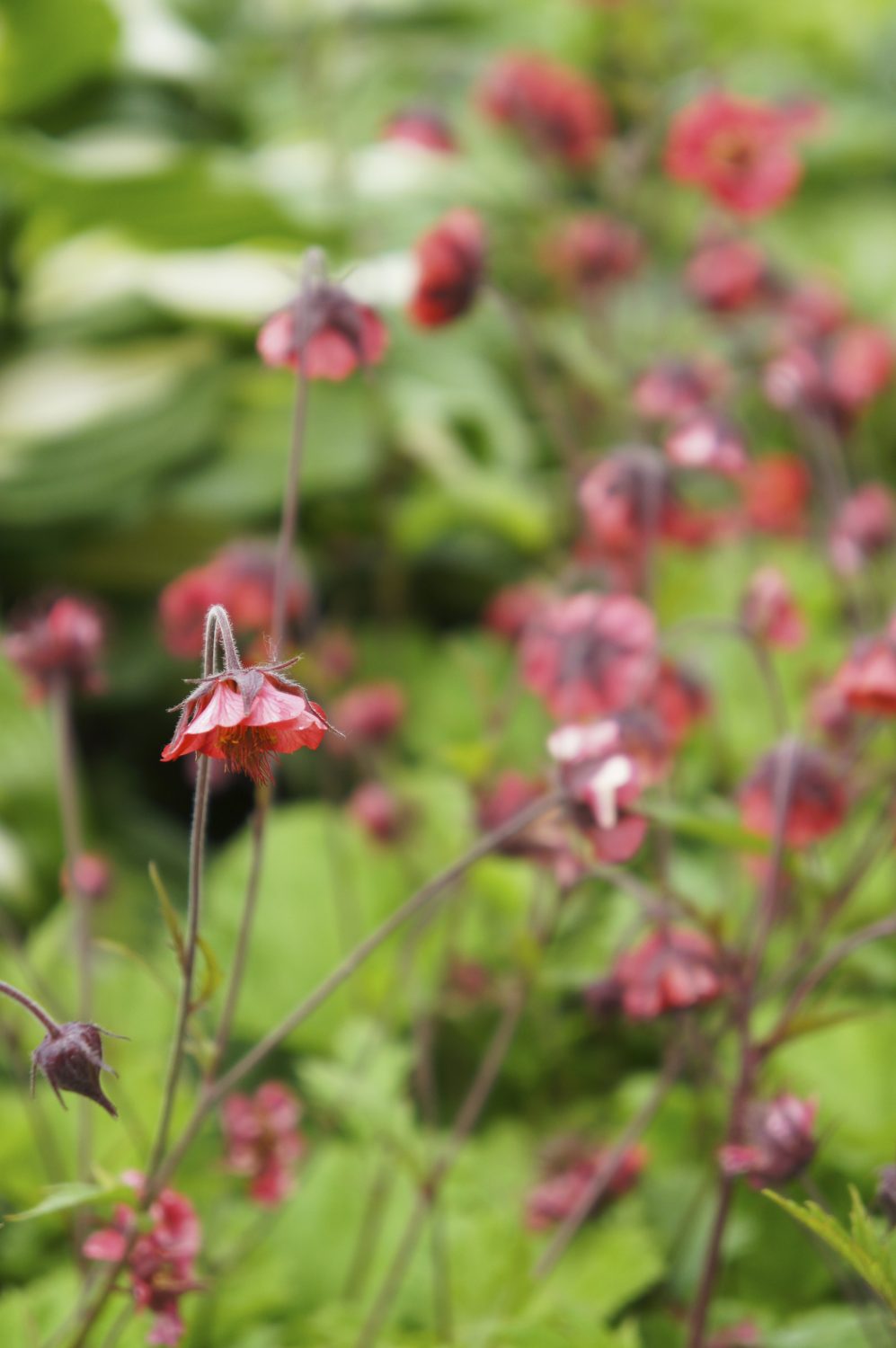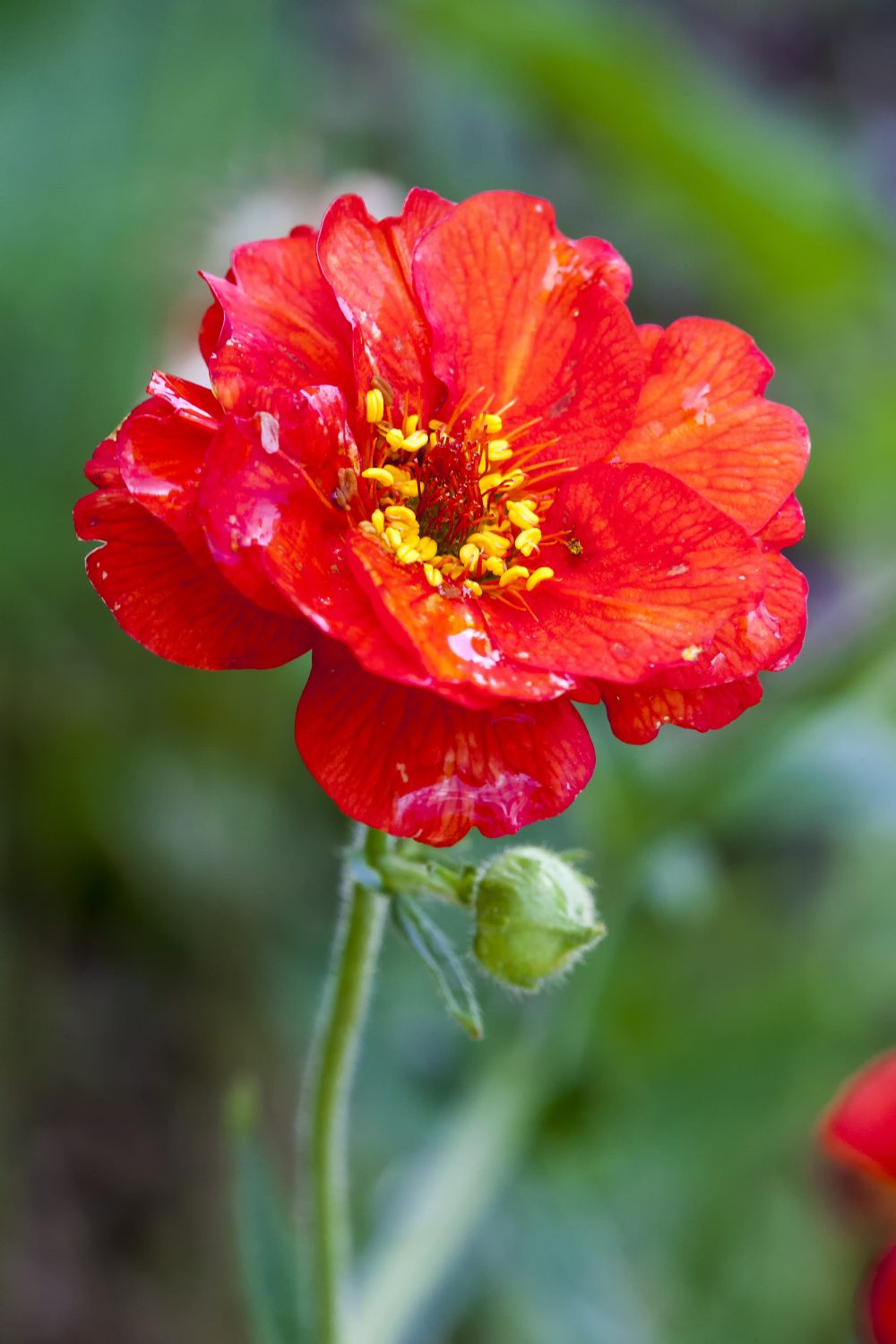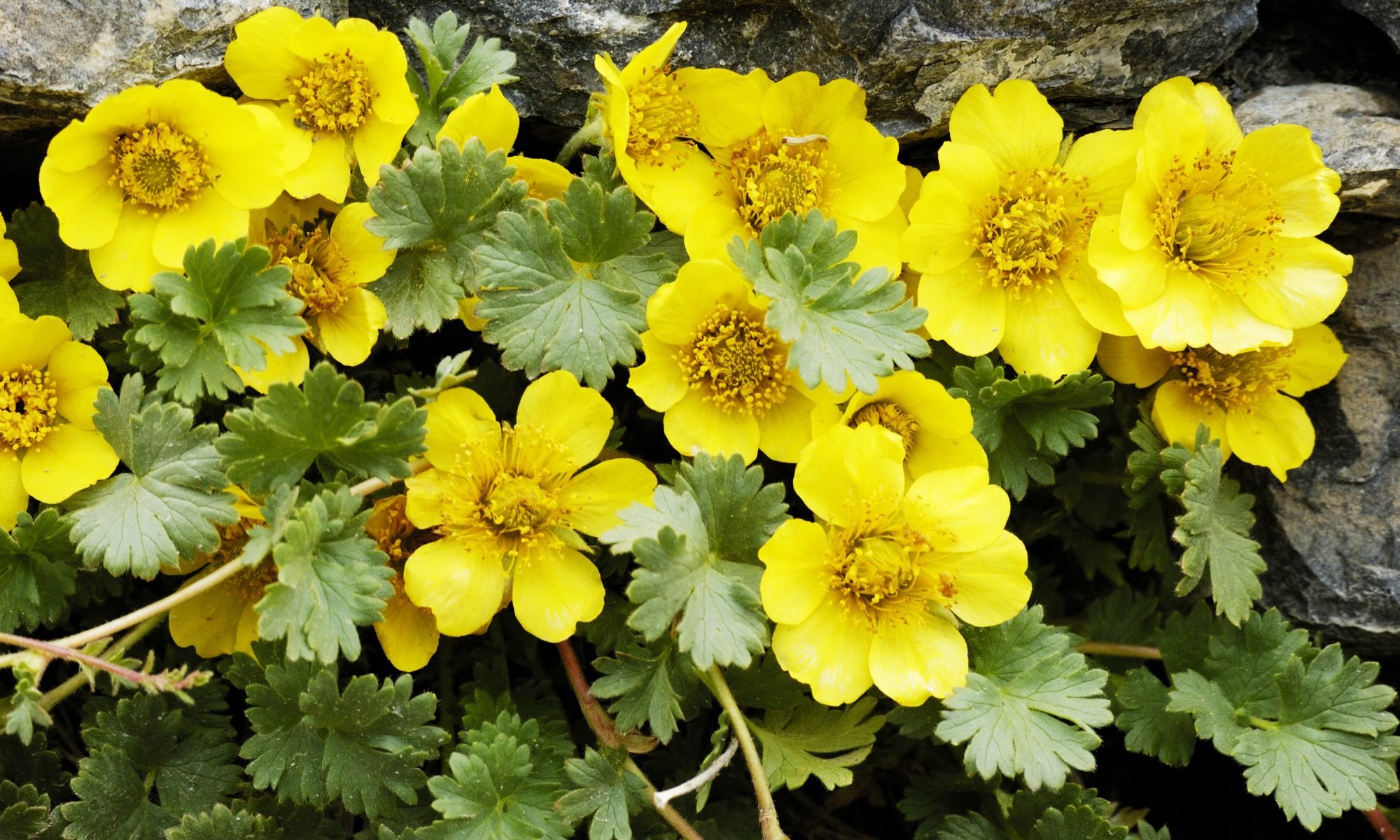Sue Whigham delves into the background of this hardy perennial
Bearing in mind what sparkle and zing the bright flowers of geums bring to the garden, I’m wondering why we don’t have more of them here but the three G. chiloense hybrids we do have, are well known varieties, (G. ‘Mrs. J. Bradshaw’, G. ‘Lady Stratheden’ and G. ‘Totally Tangerine’) and have been flowering for weeks. They certainly make their presence known and G. ‘Totally Tangerine’ floating above a sea of Euphorbia cyparissias ‘Fens Ruby’ is glorious. The fourth is a little Geum rivale, so delicate and so pretty but most definitely in the wrong place. It’s in the front of a border and is almost totally swamped by a self seeded hypericum. The hypericum might well have to go one of these days and the geum needs moving to a more shaded spot. It’ll thank me when I move it to a roomier position later in the season.

The first thing to know about geum is that there are three groups; the best known being the Geum chiloense forms which are native to an island off Chile where they thrive in a combination of a cold, wet climate and cool, damp soil.
The second group are G. coccineum which are alpines native to the Balkans and Northern Turkey and the third is G. rivale which are much shorter and are happiest in shady areas. They have ‘nodding’ flower heads and the many hybrids have an astonishing variety of different and delicate flowers in the most beautiful and subtle colours. So different from the G. chiloense varieties with their bright and vibrant blooms.
We are lucky enough to have the National Collection of Geum here in Kent. Sue Martin, who holds the Collection, grows geum informally in a quarter acre cottage garden setting tucked away in a peaceful spot in the village of Frittenden. Her first geum, the alpine, Geum montanum came from Elizabeth Strangman’s nursery and her second was a deservedly popular Dutch introduction, G. ‘Prinses Juliana’, a stunning orange flowered variety which thrives in a moist soil.
Monty Don was right when he said the other day something to the effect that visiting gardens is the way to learn and to get ideas. It is also great fun of course. I don’t know what I was expecting but coming through the gate to see geum growing informally as they do at Sue Martin’s garden was such a treat. The previous owner of the garden had grown vegetables and as a result the ground was well worked and had been regularly improved over the years. So from a blank canvas over thirty odd years ago, Sue has created a cottage garden full of variety and interest; crammed as it is with plants and shrubs as well as her geum collection. I really liked her Elaeagnus ‘Quicksilver’ with its silver leaves and sweet scent and the geum, of course!

Bearing in mind that the soil in Frittenden is a heavy clay, Sue adds both grit and compost when she plants out another area of geum. The idea is to grow two or three in each part of the garden and then to record how they fare in slightly different conditions depending on sunlight levels and their aspect. At present she has at least 115 different varieties in the garden and she knows them, their habits and their growing patterns intimately. Records are kept of flowering times and length of flowering on a yearly basis and whilst they vary, with a bit of dead heading, many of them come into flower in May and carry on for months. Some geum can be promiscuous, so hybrids are kept a close eye on. I particularly liked the large clump of Geum ‘Bachelfe’. Its yellow/white drooping flowers were almost over but the achenes (fruits) were particularly decorative. Sue says that it is so vigorous there is only room for one in the Collection and this one has to be kept under control. It makes for a great ground cover plant.
So geum are members of the Rosaceae family and to my mind have everything going for them. No wonder there are always great displays of them at the RHS Chelsea Flower Show and they were certainly in evidence this year. It was good to see them in Jo Swift’s Our Green Planet and RHS Bee Garden, destined to go to a school after the Show. So geum are brilliant pollinator plants as well as being slug and snail resistant, with semi evergreen leaves and, in the main, a long flowering period.
Geum chiloense are marvellous for the front of a border as they are ‘see through’ plants. They have long, narrow, branching and often hairy stems with clusters of bright flowers at the top of the stem in a huge variety of colours and can be both single and double. As G. chiloense comes true from seed, it’s an idea to leave some seed heads to mature and produce that seed. They can then be sown and overwintered in a cold frame or something similar.
However, as geum grow from rhizomes, another way of reproducing the plant would be to make basal cuttings in the autumn having lifted the plant. Sue once produced an astonishing twenty eight new plants from dividing the rhizomes of G. ‘Hilltop Beacon’ which is a particularly vigorous chiloense variety. How satisfying! This variety has soft tangerine flowers, complete with a frilled edge and pink undertones on the reverse. It grows well in light shady conditions and should flower from May through to August. And whilst geum last for years, it is a good idea to divide them regularly, either in the autumn or early spring. The plants in the National Collection will be divided in the autumn. You’ll know, hopefully, when the plant is ready to be divided as, rather like some grasses, the strongest growth appears to be around the edges with a bit of a bare centre left in the middle of the plant.
For more information about the National Collection of Geum, plants for sale, the National Gardens Scheme’s Open Days or group visits, please visit geumcollection.co.uk
Brickwall Cottage Garden and Nursery, 1 Brickwall Cottages, Frittenden, Kent, TN17 2DH. 01580 852425
Sue Whigham can be contacted on 07810 457948 for gardening advice and help in the sourcing and supply of interesting garden plants.
You may also like
Go with the Flow
Sue Whigham shares some valuable new-to-gardening advice I’m sure that by now we should be used to the rain but I’m not entirely sure that we are. We had a dry, sunny day the other day and how everybody’s mood...
Farm Fables
Jane Howard gets to the bottom of why so many ponds have disappeared across the High Weald I have a new passion, almost an obsession, it’s about ponds. And there’s a distinct possibility I might become a bit of a...
Hedge Issues
Sue Whigham takes a meander along nature’s verdant and vital corridors Recently the BBC’s Today programme carried a feature about England’s hedgerows which created a lot of interest among listeners. On the strength of that, Martha Kearney interviewed one of...












